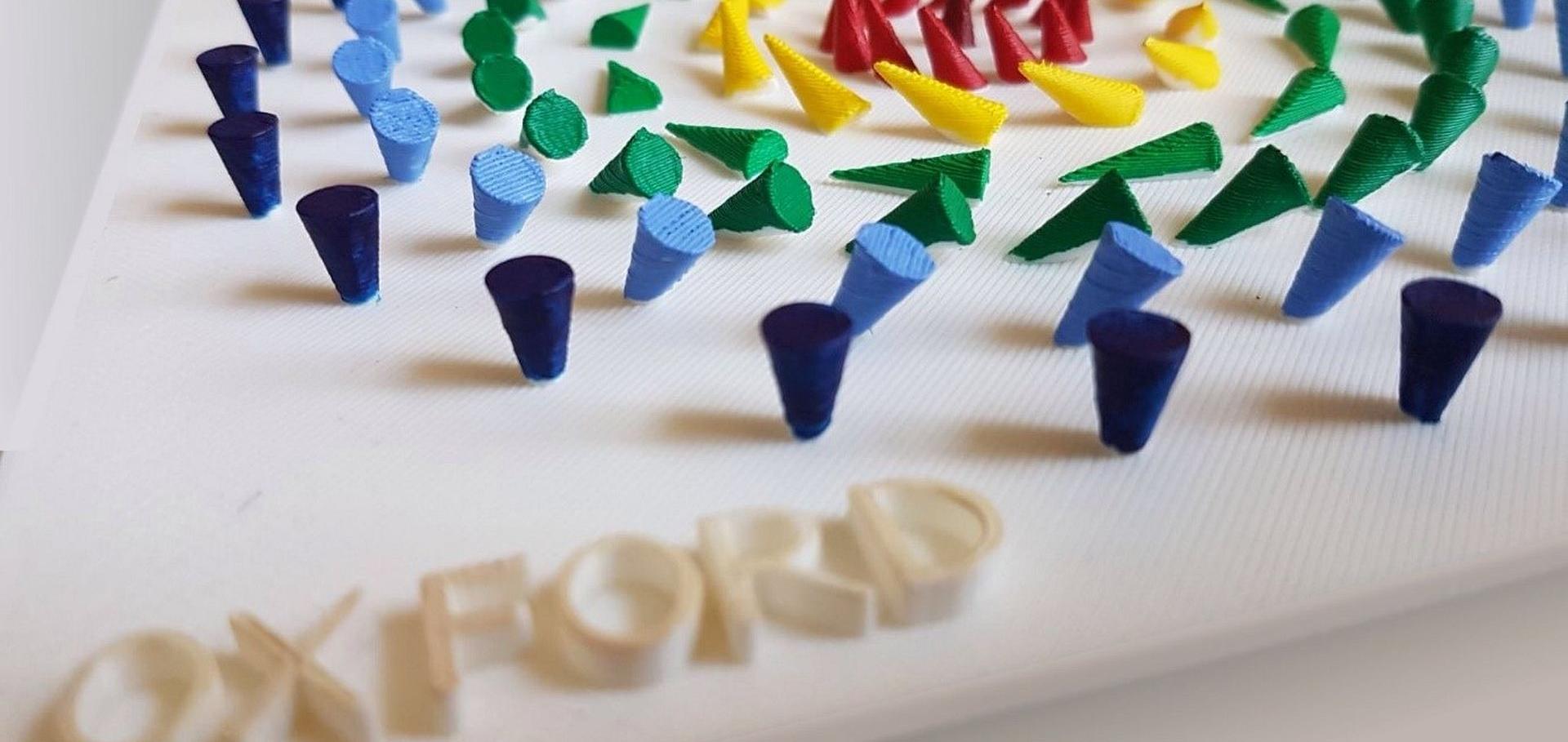Imaging and manipulation of skyrmion lattice domains in Cu2OSeO3
Applied Physics Letters American Institute of Physics 109 (2016) 192406
Abstract:
Nanoscale chiral skyrmions in noncentrosymmetric helimagnets are promising binary state variables in highdensity, low-energy nonvolatile memory. Nevertheless, they normally appear in an ordered, single-domain lattice phase, which makes it difficult to write information unless they are spatially broken up into smaller units, each representing a bit. Thus, the formation and manipulation of skyrmion lattice domains is a prerequisite for memory applications. Here, using an imaging technique based on resonant magnetic x-ray diffraction, we demonstrate the mapping and manipulation of skyrmion lattice domains in Cu2OSeO3. The material is particularly interesting for applications owing to its insulating nature, allowing for electric fielddriven domain manipulation.Step-flow growth of Bi2Te3 nanobelts
Crystal Growth and Design American Chemical Society 16:12 (2016) 6961-6966
Abstract:
Understanding the growth mechanism of nanostructures is key to tailoring their properties. Many compounds form nanowires following the vapor-liquid-solid (VLS) growth mechanism, and the growth of Bi2Te3 nanobelts was also explained following the VLS route. Here, we present another growth mechanism of Bi2Te3 nano- and sub-micron belts and ribbons. The samples were grown by physical vapor transport from Bi2Te3 precursor using TiO2 nanoparticles as catalyst, and analyzed by scanning electron microscopy and scanning transmission electron microscopy. The growth starts from a Te-rich cluster, and proceeds via a thin, tip-catalyzed primary layer growing in the [110] direction. The primary layer serves as a support for subsequent step-flow growth. The precursor predominantly absorbs on the substrate and reaches the belt by migration from the base to the tip. Terrace edges pose energy barriers that enhance the growth rate of secondary layers compared to the primary layer. Broadening of the sidewalls is commonly observed and leads to triangular voids that can even result in a branching of the growing belts. Step-flow growth of Bi2Te3 sub-micron belts is different from the spiral-like growth mode of Bi2Te3 thin films, and an important step towards the growth of layered topological insulator nanostructures.Spin pumping in magnetic trilayer structures with an MgO barrier
Scientific Reports Nature Publishing Group 6 (2016) 35582
Abstract:
We present a study of the interaction mechanisms in magnetic trilayer structures with an MgO barrier grown by molecular beam epitaxy. The interlayer exchange coupling, Aex, is determined using SQUID magnetometry and ferromagnetic resonance (FMR), displaying an unexpected oscillatory behaviour as the thickness, tMgO, is increased from 1 to 4 nm. Transmission electron microscopy confirms the continuity and quality of the tunnelling barrier, eliminating the prospect of exchange arising from direct contact between the two ferromagnetic layers. The Gilbert damping is found to be almost independent of the MgO thickness, suggesting the suppression of spin pumping. The element-specific technique of x-ray detected FMR reveals a small dynamic exchange interaction, acting in concert with the static interaction to induce coupled precession across the multilayer stack. These results highlight the potential of spin pumping and spin transfer torque for device applications in magnetic tunnel junctions relying on commonly used MgO barriers.X-ray magnetic circular dichroism study of Dy-doped Bi2Te3 topological insulator thin films
Journal of Magnetism and Magnetic Materials Elsevier 422 (2016) 93-99
Abstract:
Magnetic doping of topological insulators (TIs) is crucial for unlocking novel quantum phenomena, paving the way for spintronics applications. Recently, we have shown that doping with rare earth ions introduces large magnetic moments and allows for high doping concentrations without the loss of crystal quality, however no long range magnetic order was observed. In Dy-doped Bi2Te3 we found a band gap opening above a critical doping concentration, despite the paramagnetic bulk behavior. Here, we present a surface-sensitive x-ray magnetic circular dichroism (XMCD) study of an in situ cleaved lm in the cleanest possible environment. The Dy M4;5 absorption spectra measured with circularly polarized x-rays are tied using multiplet calculations to obtain the e ective magnetic moment. Arnott-Noakes plots, measured by the Dy M5 XMCD as a function of field at low temperatures, give a negative transition temperature. The evaporation of a ferromagnetic Co thin lm did not introduce ferromagnetic ordering of the Dy dopants either; instead a lowering of the transition temperature was observed, pointing towards an antiferromagnetic ordering scenario. This result shows that there is a competition between the magnetic exchange interaction and the Zeeman interaction. The latter favors the Co and Dy magnetic moments to be both aligned along the direction of the applied magnetic eld, while the exchange interaction is minimized if the Dy and Co atoms are antiferromagnetically coupled, as in zero applied field.One-step SnO2 nanotree-growth
Chemistry - A European Journal Wiley 22:39 (2016) 13823-13825


